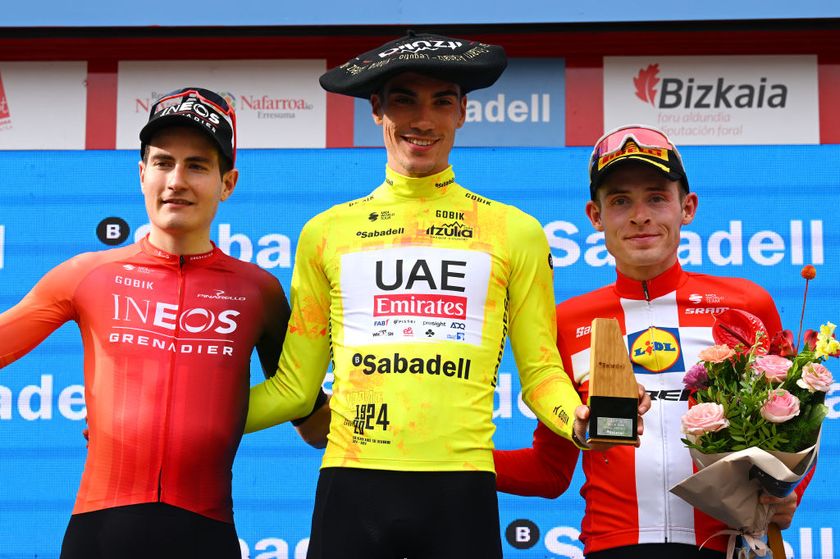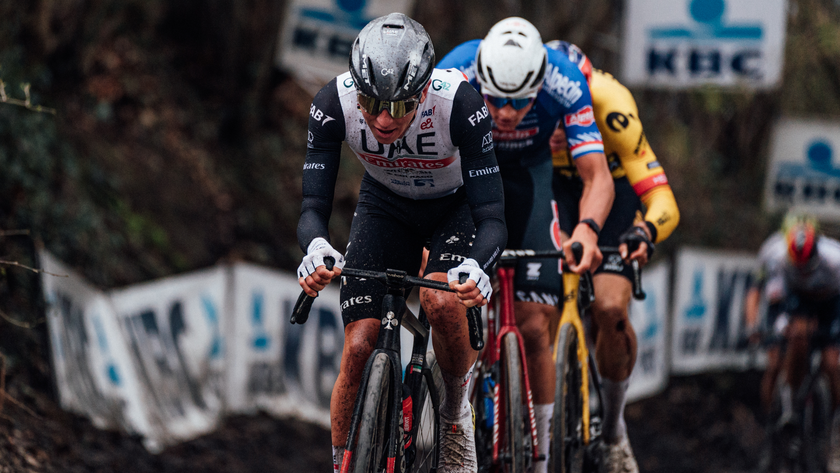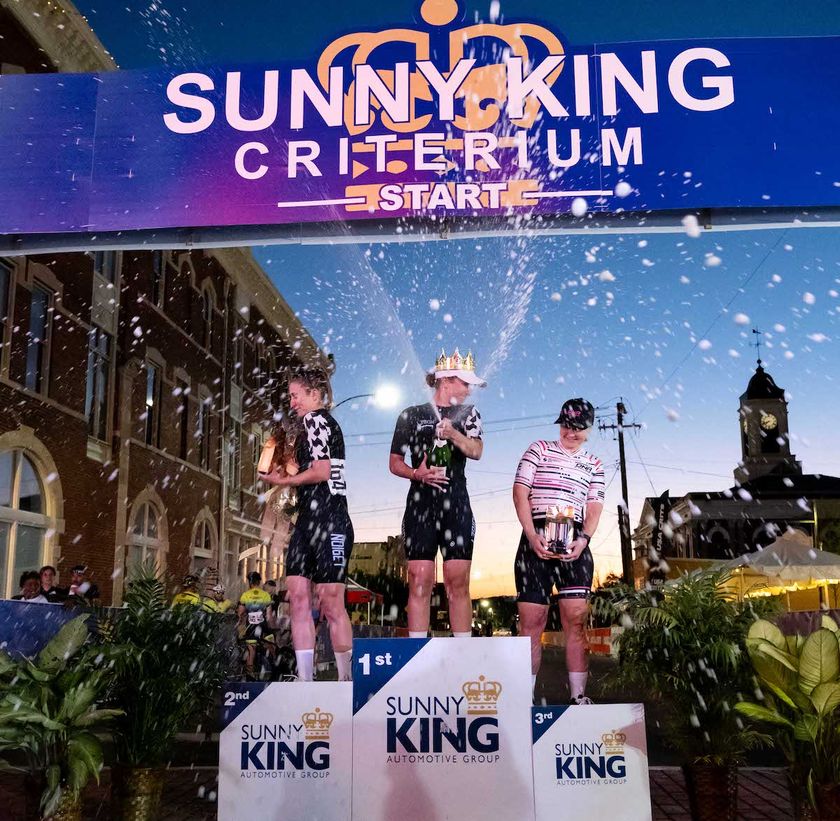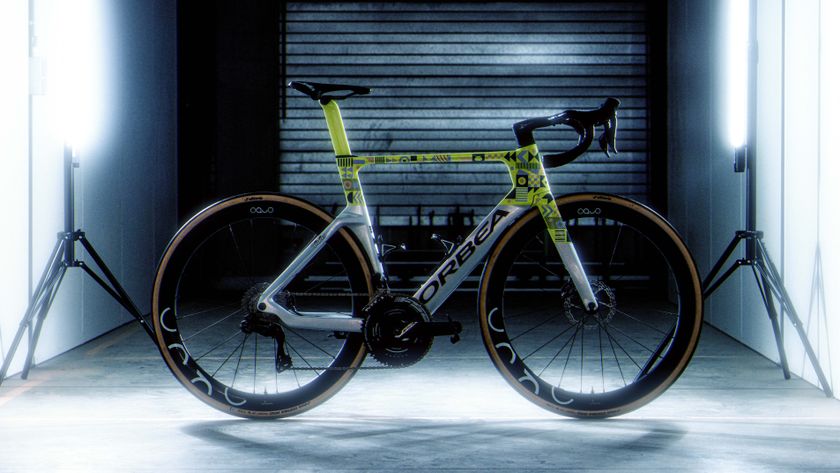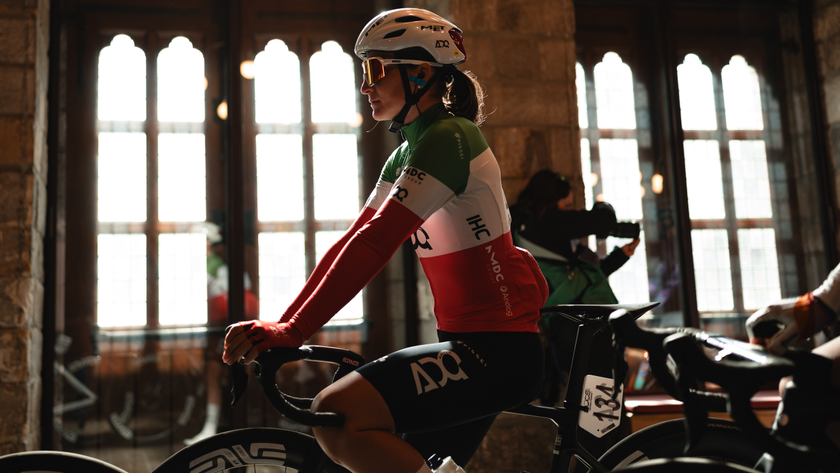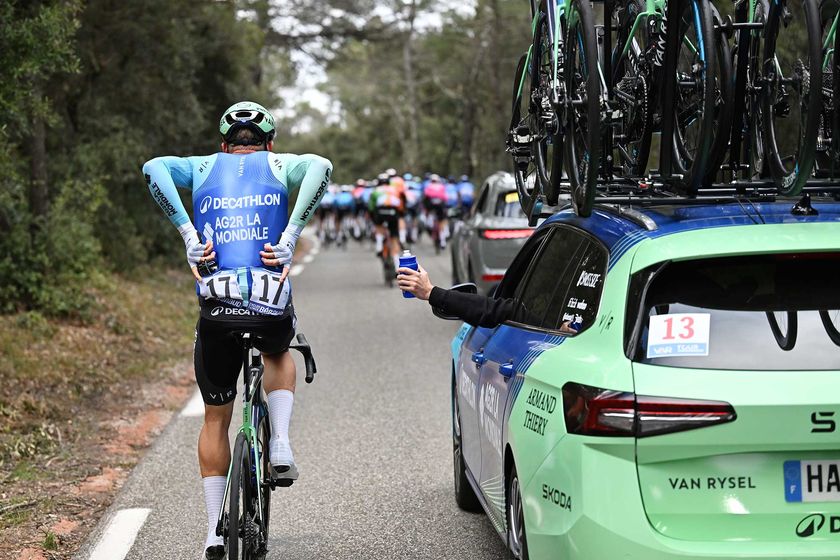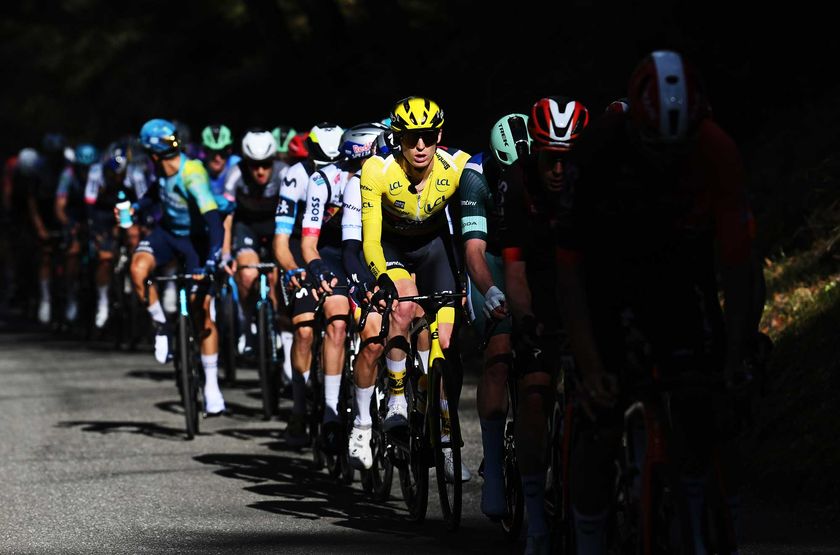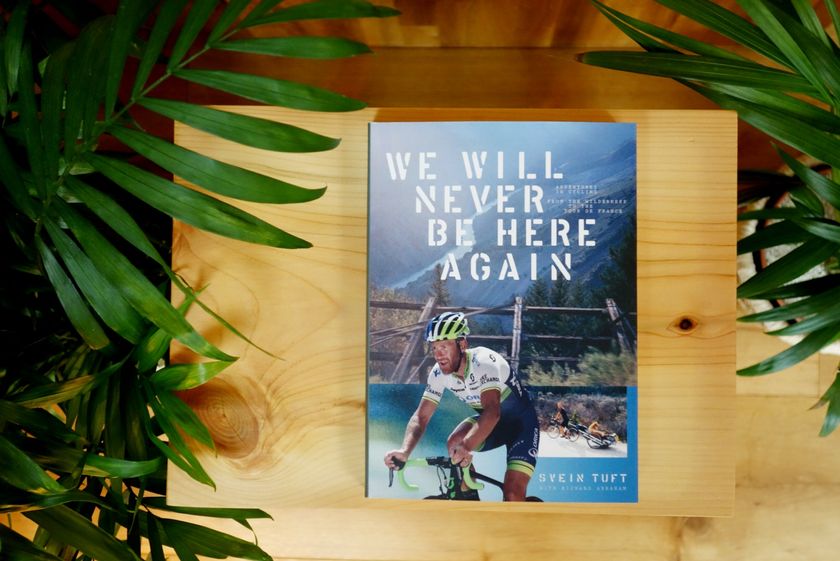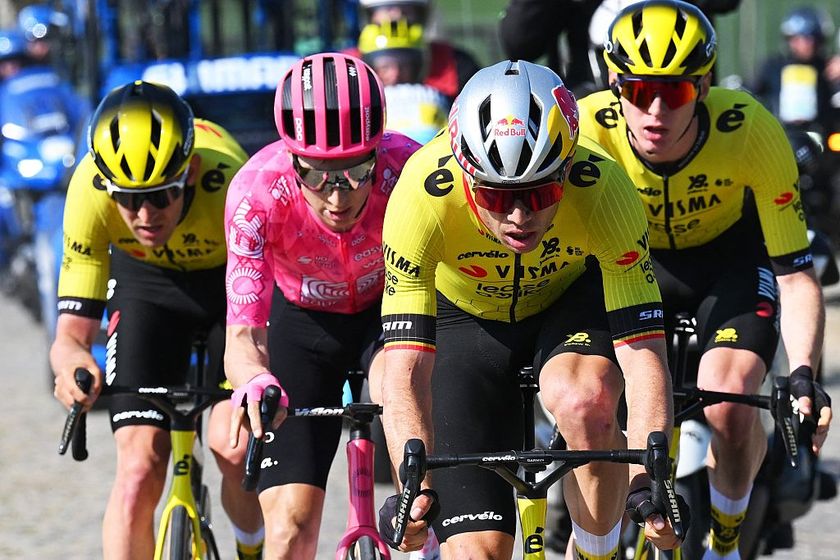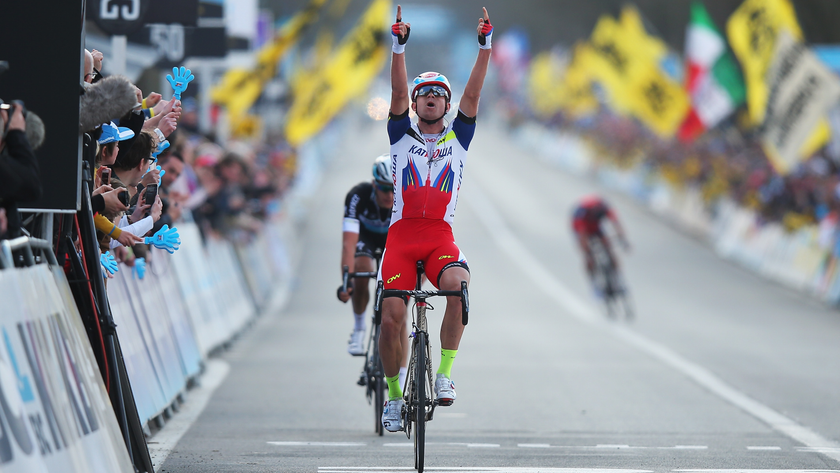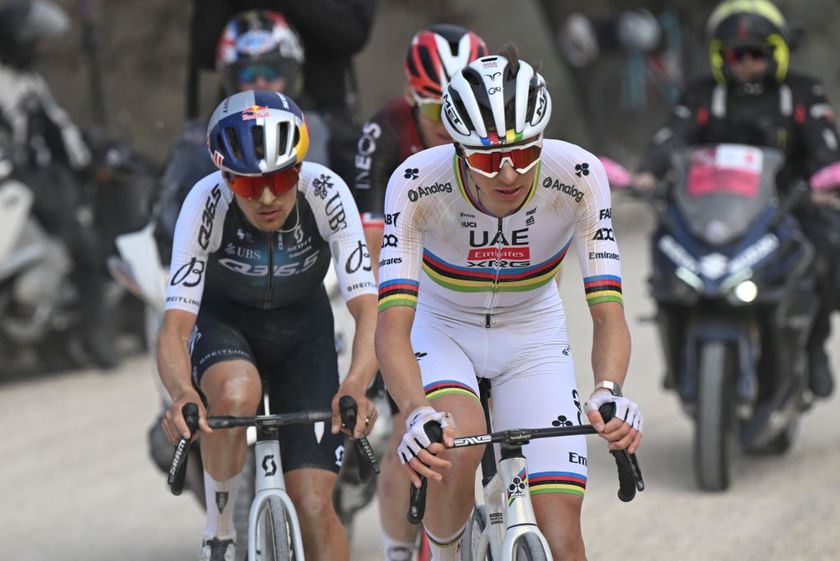Cyclingnews Fitness Q&A - August 31, 2011
Your fitness questions answered
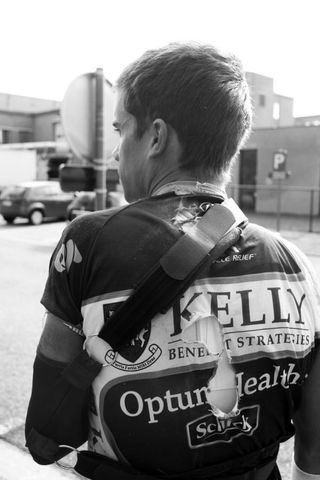
Topics: Cardiac Issues, Returning after injury, Foot Pain, Core workout question, Post-sportive condition loss, Preparing for your own Grand Tour
Got a question for the fitness panel? Send it to fitness@cyclingnews.com. Try and include as much relevant information as you can think of. The more details you can provide the better the panel can tailor their response to your question.
Emails may be edited for length or clarity, but we try to publish both questions and answers in their entirety.
To find advice that relates to you more easily:
Get The Leadout Newsletter
The latest race content, interviews, features, reviews and expert buying guides, direct to your inbox!
Preparing for your own Grand Tour
Cardiac Issues
Panel,
I’m a 65 year old male 6ft 160 lb resting pulse 34-36, max exercise pulse 173, always in shape and in excellent health, no meds no surgeries, and no allergies I was referred to a cardiologist because of what I think is post-static hypotension. After a 5 minute rest, in a cool environment, my pulse rises from 52 while sitting ...when I stand it can shoot up to 97 and then stabilize in the low 80"s. This can occur even 6 or 7 hours after exercise. My complaint is I often get dizzy when I stand and need to put my hands on my knees when I bend over, otherwise I might "faint".
The cardiologist performed a Holter 24 hour ECG monitoring which confirmed my findings upon standing. He also stated that between 2-4 AM, I had 3 pauses of 2.1 seconds and a pulse low of 31. I had a normal echo and EKG. I am scheduled for a "tilt-table test" on August 29.
It is my cardiologist’s opinion that I need to have a cardiac pacemaker inserted to keep me from missing beats and my pulse from being so low.
I may need a beta-blocker to keep my heart rate from being so high. He feels there is a strong probability that the pauses will get longer leading to an emergency.
I seek a second opinion. I think that due to my athleticism, the pacemaker and beta-blocker are not necessary. I would appreciate all opinions.
Arnold
Scott Saifer says:
Hi Arnold,
I'm not a doctor nor do I play one on TV, and this really is a question for a cardiologist, but make sure that the cardiologist you consult is familiar with highly trained athletes. Unfortunately, many medical professionals have no familiarity with athletes in training and have been known to diagnose normal training adaptations as medical problems.
A sleeping pulse in the low 30s is not dangerous in itself. It's not even rare among athletes. A "pause" of 2.1 seconds is hardly a skipped beat when your normal beats are 1.9 seconds apart. I'm not saying that you don't have a problem, only that what you have described sounds like it could be normal athleticism rather than a problem. The treatments described are extreme and will greatly degrade your exercise capacity. Another cardiologist can tell you if they might also be needed to save your life.
It's common for athletes to have reduced blood pressure after hard workouts. When blood pressure is low, standing up quickly can decrease blood flow to the brain, causing light headedness, tunnel vision, seeing stars and possibly a momentary faint. If the symptoms are bad enough to bother you, it's worth looking into them. If you don't have sodium-sensitive hypertension (high-blood pressure that gets worse when you eat salt) the easiest way to keep post exercise blood pressure up is to eat more salt and make sure to stay well hydrated. Another trick in the mean time is to cough as you stand up. Coughing boosts blood pressure momentarily and can maintain blood flow to your brain when you are having a low-blood-pressure event.
Bottom line; get a cardiologist who is familiar with older athletes if the current one isn't.
Returning after injury
Hi panel,
I'm a 30 year-old, moderately competitive, self-coached (ie. Training Bible) Cat. 1/2 rider who's been racing for 5 years. In mid-July, I was injured in a crash in a race that forced me to take four weeks off the bike. I've returned to training now, but feeling a bit lost about how to proceed since it's an awkward part of the year. Road racing is over for the year and although I race cyclo-cross, I don't do it seriously (I only have a cat 4 CX license) so I'm not interested in specifically training for that. My question: where should I begin with training? I was in good form when I was injured, but obviously lost most of that fitness. Should I just extend my normal base training period which would normally begin in November?
Thanks,
Dieter
Scott Saifer says:
Hi Dieter,
You are on the right track. Since you are now well rested, even involuntarily, this would be a good time to start building base for 2012. If you do that, plan to spend the extra months doing mostly lower intensity endurance riding. The other choice is to ride easy for a few weeks to get a minimal base, then "fool around" on the bike for a few weeks, riding hard and knowing you don't have the base to sustain it. Then you'll be tired in time to rest in October and start base again in November. The former plan is better for your competitiveness in 2012, provided you can handle all that training time without racing.
Foot pain
Hello,
I am writing with the hope that you can help me. In the last month i have been having problems with pain in the balls of both feet. It started about 1 month ago when i went to the South of France to do some training. I spent a week climbing approx 6 hours a day, after about 4 days I started to get some pain.
I recently went back to France to do some more climbing, I found that again after approx 4 days the pain started and now it has become quite severe. I have a 10 day event in the mountains coming up so it is quite important. The pain is mainly the ball with some tingling in the toes. I have changed nothing with my riding position; I have had my shoes for 5 years. The only thing that had changed is the increase in miles and climbing.
I have tried a few things after reading various articles on the web; loosening my shoes, move cleats as far back as possible, fit insoles inside shoes. The shoes are SIDI ergo carbon with SPD-SL pedals.
They all help a little but do not resolve the problem and I hope you can help because I am having to stop every 2 hours and take off my shoes, massage my feet and then continue.
Many thanks,
Stuart.
Steve Hogg says:
G'day Stuart,
There are two broad categories of possibilities as to how our problem came about. The first is issues with your position on the bike and the second is issues with your feet that you may have been unaware of prior to the first onset of pain. It could be a combination of both.
You haven't given much specific info to work with but here goes. Based on what you have said. Sidi shoes don't have particularly rearward cleat hole mounting placement. It is okay but from time to time I will see 2 pairs of Sidi shoes; same model, same size and quite different cleat hole placement. If you are unlucky enough to have a pair with holes that are further forward;
OR
-If your feet are proportioned in such a way as to place the metatarsal joints further back than average in the shoe
OR
-If your seat is too high
OR
-If you don't have enough arch support
OR
-If you need foot correction in the form of wedging and don't have it,
OR
-If you have dropped metatarsal joints
As you haven't had problems until your mileage, intensity and climbing duration rose, I would be betting on cleat position not being far enough back as the major factor, with any or all of the potential issues above, particularly seat height, being possible contributors as well.
These links will give your more info regarding cleat position, seat height and foot correction.
Cleat Position
Link 3
Foot Correction
Link 4
Link 5
Link 6
Core workout question
Panel,
I’m wondering if I could eliminate one of the core exercises I’m currently doing. I do three sets of back extensions (20 reps each set) on a roman chair and then later I do the same number on a stability ball. I got to thinking that I could probably do away with one of these and I’d hazard a guess the stability ball version is what I should eliminate, because I feel more of a workout with the roman chair. The other core exercises I do on/ off the ball include ball crunches, roll outs, planks, cable core press, leg lift using a captain chair, oblique side bends with weights and a cable core press also with weights. I’m a bit constrained by time and if I remove one of the sets of back extensions, what would be a good addition?
Chris
Scott Saifer says:
Hi Chris,
You haven't said what your goals are from the weight lifting so I can just give some generic advice. You are right that if two exercises are very similar they are redundant and it would make sense to eliminate one of them to save time. If you have to do just one of two similar exercises, which one depends on your goals? If the goal is some sort of over-all strength, balanced body, general fitness sort of thing, I'd have you keep the exercise that uses more muscle groups, or calls for balance and co-ordination. That would mean keeping the back extension on the ball. If for some reason you want to be super strong at roman chair type back extensions but don't care so much about functional strength, keep the roman chair work.
All the exercises you mention are of course core exercises. If your goals are to improve your high-intensity cycling, I'd suggest adding some work for the muscles that power the bike.
Post-sportive/tour fitness and performance loss
I'm a 43-year-old male recreational cyclist ridng about 6,000 miles/year. I enjoy a couple week-long tours (50-100 miles/day) a year. Problem is, for about 4 - 6 weeks following a tour, my fitness seems to drop dramatically. It's like I'm riding on fumes! I keep hearing that a tour "makes you stronger," "increases your fitness," etc., but in all these years of touring I have yet to experience anything near that! I take a "recovery" week following the tour - or, at least what passes for recovery when you have to walk 8 miles/day delivering mail. I ride and feel fine during the tour, and I seem OK during the recovery week - as if I'd feel OK going harder - but, then the second week it really hits me. Any ideas why, and - especially - what can be done to prevent it? Or, is this just another "hazard" of being a mailman?
Scott Saifer says:
Hi Paul,
It's all about expectations. Your sources are right that a tour makes you stronger, but if the volume or intensity during the tour is much above what you do at home, you should expect that recovery and rebound will take 3-4 weeks, rather than one or two. That's why the pros preparing for the grand tours do smaller stage races that end three weeks or a month before the big ones, but not a week or two. The fact that you are on your feet all day makes it that much harder to recover and might even delay the fitness burst a bit longer.
If you return from a tour and sit on your butt for three or four weeks, you'll be detained by the time the post-tour fitness kicks in, so the key to getting the fitness advantage from a tour is the structure of the recovery period. The first week, mix short recovery rides and days off. The second and later weeks, start doing longer base rides again as you feel ready. By the end of the third week, you should be ready to rock again.
How does one prepare for a Grand Tour?
Hi Panel,
I've been watching the Vuelta over the past week, and I watched a brilliant Tour de France earlier in the summer and it's got me thinking; how would an amateur like me train to be able to complete the Tour route?
I'll give you a bit of background about myself... I'm nearly 19 years old, 6ft 4 and roughly 74kg. I bought my road bike 2 years ago, did a couple of sportives in 2010 (up to about 80 miles) and have now built up the mileage in 2011. During the summer break, now that I've finished sixth form, I've been doing between 10 and 18 hours cycling a week, with a 3 day trip to the Lake District recently by myself including 85 miles the first day, 10ish the second and 115miles home on the third day. Unfortunately, my riding hasn't been very structured so I know I could benefit much more from the hours that I put in.
I'd love to organise and complete a difficult challenge for charity and so I had the idea of riding the route of the Tour de France. Firstly, how would a rider like me go about training properly to complete a challenge like this? Is it even realistic to be able to do this in summer 2012? I go to university in September (to Sheffield, so lots of hills about) so would also like to know roughly how many hours I would have to put in each week so I know whether this would be possible, although I know the weekly hours would increase as the ride gets closer.
I know for sure that this would be very hard work, and I know that organising something like this would also take lots of work but I imagine it would be extremely rewarding.
I look forward to reading your reply, and thanks in advance for your help/advice.
Best regards,
Andrew
Scott Saifer says:
Hi Andrew,
How much you need to train depends on what sort of experience you are looking for. When I was in college, I did a loaded bike-camping tour across the United States from California to Maine (about 3600 miles or 5700 kilometers), climbing through the Sierras and the Rocky Mountains, so I've got some background for your question. My training plan was this: go to class by bike, about 2 miles each way, ride every few weeks on an old bike for about 30 miles. Build new bike the night before leaving. My recollection is that my legs and feet hurt a lot for the first week of the ride, then I felt fine and ended up being racer-fast by the time we got to Eastern Canada.
I don't recommend you follow my old plan, but the point is that if you are young and energetic and willing to suffer a bit and ride slowly all day, you could ride the Tour route with minimal training and some very low gears. The down side of a no-training approach is that you run a decent chance of ending up injured, and you'll be moving slowly and hurting a lot.
The research says that people who ride at least six hour or about 100 miles (160 kilometers) per week get a lot few injuries when they step up to multi-day tours than do riders who have not consistently done that volume, so that's a minimal starting point. If that's all you were going to do, I'd suggest you ride an hour every other day and use up the remaining hours in a bigger chunk one day per week. it's possible that the 6 hours per week is important because that is enough that if your bike fit isn't spot on, you'll find out about in training and get it corrected before the tour. It's also possible that riding that much is enough to toughen joints and connective tissue so they won't be damaged by longer riding.
Riders who do 8-12 hours or so per week undergo another transition. Not only does injury frequency drop dramatically, but sustainable speed goes up, recovery improves as does ability to climb at a decent pace. My advice would be to aim for this range at least if you want to really enjoy your tour rather than suffer through it. Beyond 12 hours, more make you faster, but there's no other threshold to cross really. You just keep increasing speed and recovery ability.
That's the logic: Here's an outline suggested plan. Most of your riding should be aerobic base pace on relatively flat roads. Head for the hill once per week, but ride them like they are coming in the middle of an all day ride. Cruise up knowing you'll be riding another few hours and another hill afterward. Don't sprint up them. Ride an hour or more at least every other day. When you are about 6 months before your tour, start increasing distance on one ride per week by about 1/2 hour per week until you are up to six hours or so on that ride. Then start adding time on the adjacent days. Get whatever time you can in 3-4 day back-to back rides.
As you are doing your training, figure out what and how much you need to eat and drink to stay strong through multiple long days. Pay attention to any aches or pains that show up and deal with them.
Good luck. Write in to tell us about your progress and how you do on the Tour.
The Cyclingnews Form & Fitness panel
Scott Saifer (www.wenzelcoaching.com) is head coach, CEO of Wenzel Coaching.com and has been coaching cyclists professionally for 18 years. He combines a master's degree in Exercise Physiology with experience in 20 years of touring and racing and over 300 road, track and MTB races to deliver training plans and advice that are both rigorously scientific and compatible with the real world of bike racing.
Scott has helped clients to turn pro as well as to win medals at US Masters National and World Championship events. He has worked with hundreds of beginning riders and racers and particularly enjoys working with the special or challenging rider. Scott is co-author of Bike Racing 101 with Kendra Wenzel and his monthly column appears in ROAD Magazine.
Steve Hogg has owned and operated Pedal Pushers since 1986, a cycle shop specialising in rider positioning and custom bicycles. In that time he has positioned riders from all cycling disciplines and of all levels of ability with every concievable cycling problem. Clients range from recreational riders and riders with disabilities to World and National champions. He can be reached at: www.stevehoggbikefitting.com
Kelby Bethards, MD received a Bachelor of Science in Electrical Engineering from Iowa State University (1994) before obtaining an M.D. from the University of Iowa College of Medicine in 2000. Has been a racing cyclist 'on and off' for 20 years, and when time allows, he races Cat 3 and 35+.
He is a team physician for two local Ft Collins, CO, teams, and currently works Family Practice in multiple settings: rural, urgent care, inpatient and the like.
Pam Hinton has a bachelor's degree in Molecular Biology and a doctoral degree in Nutritional Sciences, both from the University of Wisconsin-Madison.
She did postdoctoral training at Cornell University and is now an associate professor of Nutrition and Exercise Physiology at the University of Missouri-Columbia where she studies the effects of energy balance on bone health. She has published on the effects of cycling and multi-day stage racing on bone density and turnover.
Pam was an All-American in track while at the UW. She started cycling competitively in 2003 and is a three-time Missouri State Road Champion.
James Hibbard progressed from the junior to the professional ranks as a rider and has over 15 years of competitive cycling experience. He is a former Collegiate All-American track cyclist, trained as a resident athlete at the United States Olympic Training Center, earned international medals as part of the U.S. National Team, and was a member of the powerhouse Shaklee and HealthNet Professional road cycling teams.
He has earned 13 National Track Championship medals, as well as numerous junior, U-23 and elite California State championships on both the road and track. Since retiring from full-time racing in 2005, James has focused on his development as a coach.
David Fleckenstein, MPT, OCS (www.physiopt.com) is a physical therapist practicing in Eagle, ID and the president of Physiotherapy, PA, an outpatient orthopedic clinic focusing in orthopedics, spine, and sportsmedicine care.
His clients have included World and US champions, Olympic athletes and numerous professional athletes. He received his Masters degree in Physical Therapy from Emory University and is currently completing his doctorate at Regis University.
He is a board certified orthopedic specialist focusing in manual medicine and specific retraining of spine and joint stabilisation musculature. He is a former Cat I road racer and Expert mountain biker.
Carrie Cheadle, MA (www.carriecheadle.com) is a Sports Psychology consultant who has dedicated her career to helping athletes of all ages and abilities perform to their potential. Carrie specialises in working with cyclists, in disciplines ranging from track racing to mountain biking. She holds a bachelors degree in Psychology from Sonoma State University as well as a masters degree in Sport Psychology from John F. Kennedy University.
Dave Palese (www.davepalese.com) is a USA Cycling licensed coach and masters' class road racer with 16 years' race experience. He coaches racers and riders of all abilities from his home in southern Maine, USA, where he lives with his wife Sheryl, daughter Molly, and two cats, Miranda and Mu-Mu.
Dario Fredrick (www.wholeathlete.com) is an exercise physiologist and head coach for Whole Athlete™. He is a former category 1 & semi-pro MTB racer. Dario holds a masters degree in exercise science and a bachelors in sport psychology.
